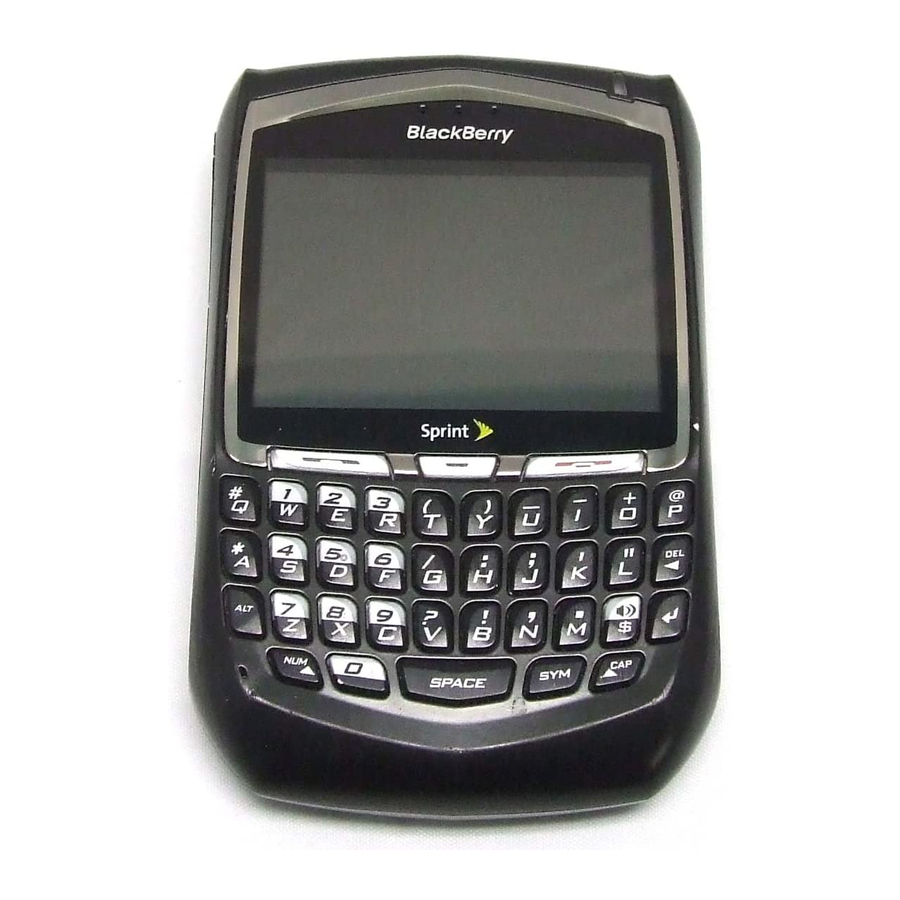Blackberry 8703e - CDMA Productinformatie - Pagina 17
Blader online of download pdf Productinformatie voor {categorie_naam} Blackberry 8703e - CDMA. Blackberry 8703e - CDMA 30 pagina's. Wireless handheld
Ook voor Blackberry 8703e - CDMA: Installatiehandleiding (18 pagina's), Aan de slag handleiding (42 pagina's), Aan de slag handleiding (28 pagina's)

inches (25 mm) from your body. If you use a body-worn accessory not supplied by RIM when
you carry the BlackBerry device, verify that the accessory does not contain metal and keep the
BlackBerry device at least 0.98 inches (25 mm) from your body when the BlackBerry device is
turned on and connected to a wireless network.
Specific absorption rate data
THIS WIRELESS DEVICE MODEL MEETS GOVERNMENT REQUIREMENTS FOR EXPOSURE TO
RADIO WAVES.
The BlackBerry® device is a radio transmitter and receiver. It is designed and manufactured not
to exceed the emission limits for exposure to radio frequency (RF) energy set by the Federal
Communications Commission (FCC) of the U.S. Government and Industry Canada of the
Canadian Government (IC). These limits are part of comprehensive guidelines and establish
permitted levels of RF energy for the general population. The guidelines are based on standards
that were developed by independent scientific organizations through periodic and thorough
evaluation of scientific studies. The standards include a substantial safety margin designed to
assure the safety of all persons, regardless of age and health.
The exposure standard for wireless devices employs a unit of measurement known as the Specific
Absorption Rate, or SAR. The SAR limit set by the FCC/IC is 1.6W/kg*. Tests for SAR are
conducted using standard operating positions specified by the FCC/IC with the device
transmitting at its highest certified power level in all tested frequency bands. Although the SAR
is determined at the highest certified power level, the actual SAR level of the device while
operating can be well below the maximum value. This is because the device is designed to
operate at multiple power levels so as to use only the power required to reach the network. In
general, the closer you are to a wireless base station antenna, the lower the power output.
15
